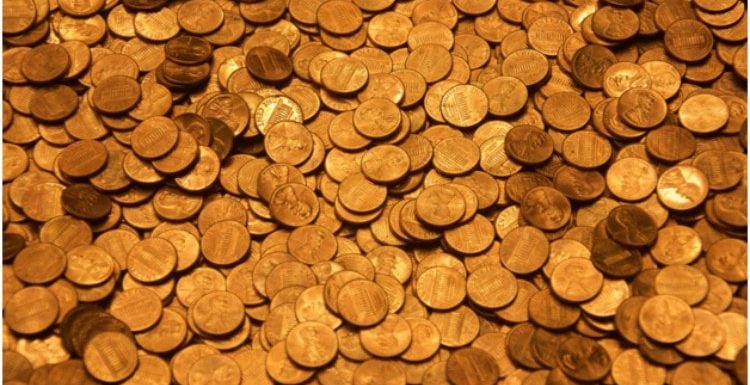
Numerous investments pursue a variety of objectives. Some are designed for significant gains in a short amount of time with little risk, while others are designed for long-term gains with low risk. Your assets should be protected against a collapse in the value of the dollar by making conservative investments, and you should also protect yourself from inflation during this period.
Among the many ways to save wealth, investing in precious metals is a popular choice. Gold retains its value wherever it is traded, but in addition to that, it’s worth increases with the passage of time. Gold experiences both rising and falling prices, yet it always manages to find its footing and ends up being a reliable investment. In the long run, investments in metals like palladium provide even greater profits.
With a precious metals IRA, you may invest tax-deferred funds in precious metals like gold, silver, platinum, and palladium. Gold and silver are often considered the best options due to their stable value and minimal volatility, but investing in them is more complicated than just purchasing bullion and keeping it in a safe deposit box.
What Percentage of Your IRA Ought to Be Made Up of Precious Metals?
Your individual retirement account (IRA) should not include more than 10 percent of any one precious metal. If you have a large number of assets in your IRA, determining the appropriate contribution rate for your IRA is not always as simple as choosing between 5% and 10%.
Many of these estimates were generated prior to the inclusion of cryptocurrencies and other assets in IRAs, thus the issue today is whether there is an optimal proportion of each asset in an IRA.
It is dependent on the kind of metal that you buy. Gold is recognized almost everywhere on the planet for a variety of reasons; but, in the event that there is a breakdown in the financial system, it is not as if one can just remove the gold from any bank.
It’s not quite as straightforward as that. Gold in an IRA is so difficult to withdraw that it’s best to play it safe and set the limit at 10%. Although many well-known investors have previously spoken forcefully against gold, it is worth noting that Warren Buffet, the king of investing, has previously put money into gold and gold mining firms.
Stocks in gold mining (https://en.wikipedia.org/wiki/Gold_mining) companies are a great way to diversify your IRA portfolio by adding more than the recommended 10% allocation to gold.
Where Can You Invest Your Money in Precious Metals for Your Retirement?
Within your individual retirement account (IRA), you have the option of making investments in a few different precious metals. It used to be that you had more choices, but now the Internal Revenue Service has narrowed it down to these four primary asset-worthy metals.
Gold
In terms of individual retirement accounts (IRAs), gold is by far the most popular and sought-after commodity. It is constantly in demand in some capacity, in contrast to other metals, which may not be the case due to their lower popularity.
Silver
The price of silver tends to be less volatile than that of gold, which means that it isn’t the most sought-after precious metal. This is one reason why silver isn’t as popular as gold. The year 2022 is being avoided by many investors and holders of IRA accounts.
Palladium
Palladium is a valuable metal that is comparable to Bitcoin in terms of its value. Even just looking over the last decade, the increase has been phenomenal. Since most of the world’s supply of this metal is in private hands, purchasing “new” palladium may be difficult and expensive.
Platinum: Platinum and silver are in the same boat at the moment. It may be held in an individual retirement account (IRA), but its value is volatile and does not appreciate in the same manner as gold does. Despite the fact that it is one among the earth’s rarest minerals, its demand and usefulness are not quite as high as those of gold and palladium.
In Your Individual Retirement Account (IRA), Where Do You Keep Your Precious Metals?
If you want to include your precious metals in your IRA, they have to be held at a depository that is recognized by the IRS. Your precious metals may be stored safely in depositories, which are protected areas staffed by custodians and offering custodial services.
The Internal Revenue Service has inspected and given its blessing to these establishments. You must complete a gold order to keep gold and other bullion in a depository. You are being taken advantage of if you purchase gold from an infomercial that airs late at night and says they will deliver the gold to you by mail in a secure manner. Absolutely, this is genuine gold. They will ship it to you, despite the fact that you’ll pay taxes on it and you won’t be able to deposit it in an IRA.
Long-term capital gains are taxed at a rate ranging from 20% to 28%, depending on the specifics of your situation. Learn more about it by visiting BMOGAM’s website, for starters. When you sell gold, that is exactly what will happen.
Because the gold in an IRA grows in value using funds that have had their taxes postponed, you won’t have to pay taxes on the amount you paid for it if you buy it altogether using your IRA money.
When you sell that gold, whatever of the circumstances, you are going to be subject to the tax on long-term capital gains. On the other hand, an individual retirement account (IRA) stores it in a secure location that is sanctioned by the IRS, which safeguards both your retirement and the gold.
